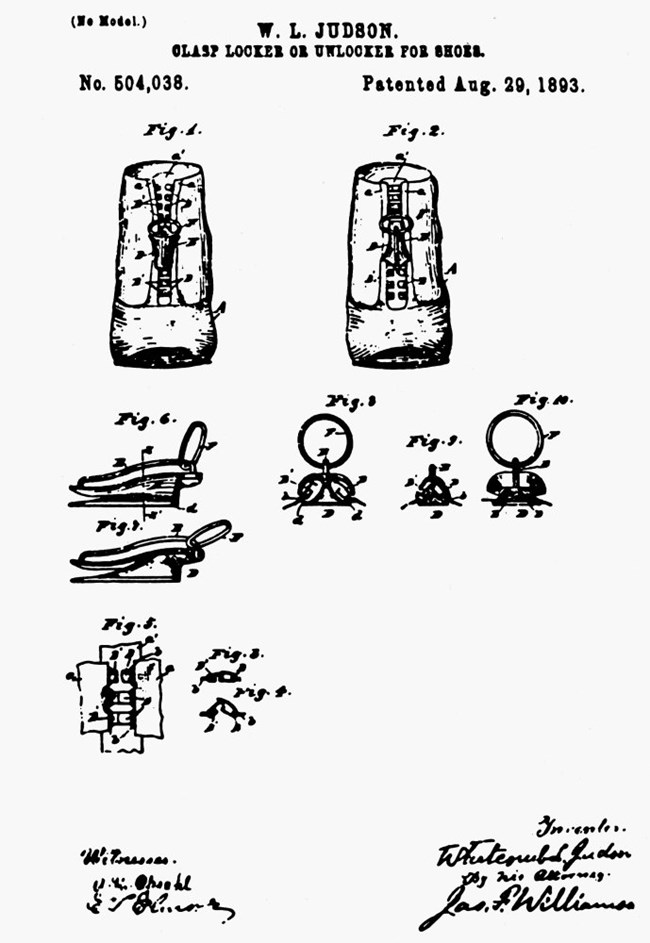Last updated: August 16, 2023
Article
Inventions from the World's Columbian Exposition

Olmsted Archives
Olmsted would collaborate with architect Daniel Burnham to create Venetian-inspired please grounds complete with waterways and natural areas for quiet reflection, complementing the grand architecture of the fair. This collaboration between the two men would help launch the “City Beautiful” movement, promoting the inclusion of green space in urban centers to improve the community’s morale and quality of life.
Twenty years before the exposition, Olmsted and Calvert Vaux had conceived of lushly planted lagoons for this area of Chicago, which would finally come to fruition. Olmsted would dredge the swamp in the area, leaving an island at the center of the lagoon, dubbed The Wooded Island, which was meant to be the central piece of landscape architecture at the fair.
As Olmsted would explain it, his goal in the design at the Chicago World’s Fair was ““to establish a considerable extent of broad and apparently natural scenery, in contemplation of which a degree of quieting influence will be had, counteractive to the effect of artificial grandeur and the crowds, pomp, splendor and bustle of the rest of the Exposition.”
In addition to the spectacular landscape architecture paired with the White City, the World’s Columbian Exposition of 1893 also introduced several inventions that are still used today.

Candy Favorites
Cracker Jack Popcorn
The go-to snack at a baseball game, even included in Take Me Out to the Ball Game, was first introduced at the Chicago World’s Fair. No one had ever added peanuts to popcorn, and when a salesman at the fair first tried the snack, he yelled out “Cracker Jack!”, which at the time meant wonderful. The two brothers. Frederick William Rueckheim and Louis Rueckheim, first began selling popcorn after the Great Chicago Fire, and while they would create several candies and snacks, Cracker Jack was their most famous.
The Sacramento Bee
Aunt Jemima
The first ready-mixed pancake flour, known as Aunt Jemima, was also introduced at the World’s Columbian Exposition. While the flour mill was originally purchased in 1888 in St. Joseph, Missouri, it did not gain popularity until the World’s Fair. When news of the Fair was announced in 1890, mill owner R.T. Davis wanted to introduce his product to a wider audience, but felt a living persona, Aunt Jemima, would help the product gain traction. Davis found Nancy Green, a former slave working as a domestic in Chicago to be Aunt Jemima and prepare pancakes on the grounds of the Fair to visitors from all across the world.
W.L. Judson
The Zipper
It’s odd to think that something so universal today was introduced at the 1893 World’s Fair, but that is the case with the zipper. While their were several versions of the zipper being invented around the same time, it was Whitcomb Judson who displayed it at the Fair, through his company, Universal Fastener. The idea of an “automatic, continuous clothing closure” was first introduced in prototype form in the early 1850s, and Judson built off that original idea, creating a clasp locker. Despite being displayed as a novelty at the World’s Columbian Exposition, fairgoers saw it as a game changer for their clothing.
Chicago Architecture Center
The Ferris Wheel
Now a staple of all fairs, the Ferris Wheel’s first fair was the World’s Columbian Exposition. The Chicago World’s Fair was constantly comparing itself to the Exposition Universelle of 1889 in Paris. Paris had the Eiffel Tower, and Chicago needed something even more magnificent. Engineer George W. Ferris submitted several different designs, and after three rejections, the designers finally accepted the idea of a great wheel. The Fair’s first two months were not as successful as originally anticipated, but once the Ferris Wheel opened, the Chicago World’s Fair began to flourish.
Wrigley Company
Wrigley's Chewing Gum
When the World’s Columbian Exposition opened in 1893, gum was not a new invention, however the marketing that the Wrigley Company used would revolutionize the industry. The Wrigley Company was originally selling baking powder; gum was given as a gift in the hopes people would buy more baking powder. Unsurprisingly, the gum became more popular than the baking powder, and at the World’s Fair, Wrigley Introduced their new flavor: Juicy Fruit.
Fairfax Media Archives
Automatic Dishwasher
The original design for the dishwasher just splashed water onto the dishes, which wasn’t very effective or efficient. Josephine Cochran decided to fix the problems, though it was nearly a decade in the making till she debuted at the Chicago World’s Fair. In 1886 she invented her first machine, though she received no investors because she was a woman. At the World’s Colombian Exposition, Cochran got the chance to get her dishwasher in front of an audience, displaying to curious crowds her invention, which was capable of washing and drying 240 dishes in two minutes.
Pabst Brewing Company
